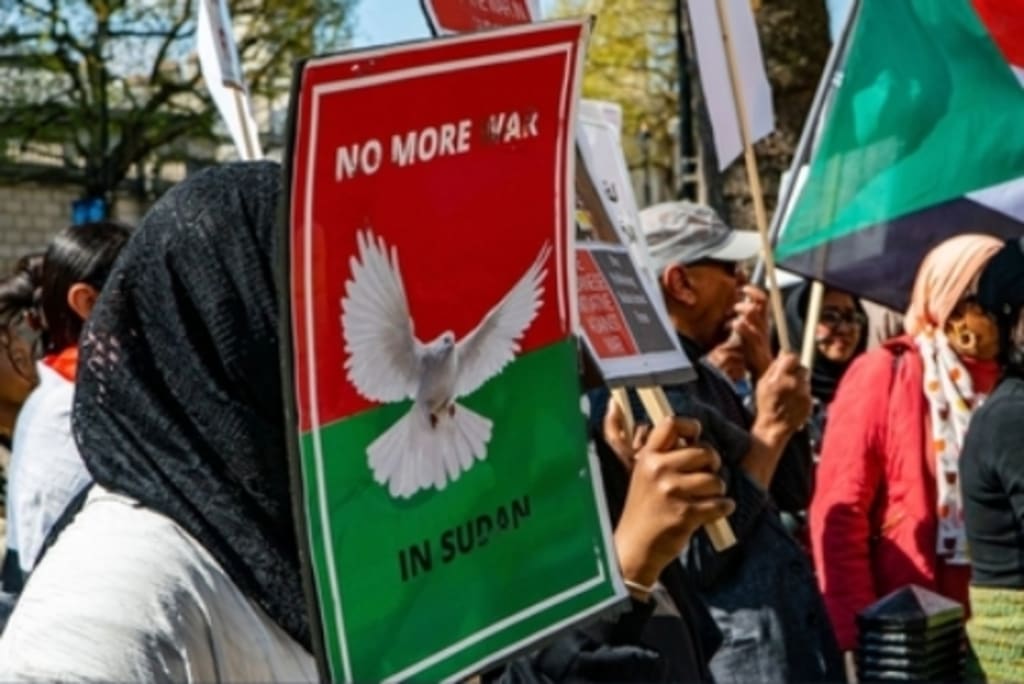
On December 19th, 2018, Sudan embarked on a hopeful revolution, driven by civilians yearning for democracy after enduring decades under President Omar Bashir's harsh military rule. Fast forward four years, and the nation finds itself in a grim state of conflict, torn apart by internal strife. The catalyst for this turmoil? The very leaders who once promised a brighter future.
Historical Prelude: Sudan's Dance with Coups
Sudan's history has been marred by a series of military coups, with the Sudanese Armed Forces (SAF) holding sway for nearly a century. The cycle continued as leaders rose and fell, each succumbing to the military's influence. In 1958, Abdullah Kalil initiated the first successful military coup, setting the stage for a pattern of coups that would shape Sudan's destiny.
Omar Bashir's Coup-Proofing Strategy
Colonel Omar Bashir, who seized power in 1989, sought to avoid the fate of his predecessors. He employed a coup-proofing strategy, surrounding himself with protectors while keeping them in check. The SAF became a linchpin in this plan, reinforcing Bashir's regime and suppressing conflicts, notably in southern Sudan.
Darfur Crisis and Bashir's Unconventional Allies
Darfur, historically neglected and agitated due to lack of representation, witnessed brutal conflict in 2003. Instead of relying on the SAF, Bashir armed local militias known as the Janjaweed, specifically a leader named Hemeti. This unconventional alliance allowed Bashir to maintain control and influence beyond conventional military channels.
Rapid Support Forces (RSF) and Economic Downturn
As South Sudan gained independence in 2011, Bashir faced economic challenges. To fortify his rule, he elevated Hemeti and the Janjaweed to the status of the RSF in 2013. Bashir granted them financial autonomy, control over Darfur's gold mines, and the ability to engage in regional conflicts for financial gain.
The People's Uprising: Revolution and Repression
In 2018, Sudan experienced widespread protests fueled by economic crisis and discontent. The government's budget allocation to the security sector sparked outrage, leading to a massive revolution demanding democracy. Bashir's protectors, the RSF and SAF, initially supported him but eventually ousted him on April 11th, 2019.
Betrayal of Democracy: A Broken Power-Sharing Agreement
As protesters celebrated Bashir's removal, Abdel Fattah al-Burhan and Hemeti assumed control. Despite international pressure, a power-sharing agreement emerged, but civilians grew disillusioned. The transitional council, initially adhering to the deal, faced internal strife, culminating in Hamdok's resignation in 2022.
Power Struggle: From Allies to Adversaries
Burhan and Hemeti, initially comrades, turned on each other. Disagreements over the role of the RSF in the army led to a significant rift. Efforts to reconcile were futile, triggering a conflict that escalated across Sudan. Civilians bore the brunt, with ceasefires shattered and thousands fleeing the violence.
International Mediation and Elusive Solutions
International actors, including the US, UAE, Saudi Arabia, and the UK, intervened to broker agreements. However, fundamental disagreements persist, reflecting a deepening power struggle. The promise of a civilian-led transitional government by April 2023 hangs in the balance as Burhan and Hemeti remain entrenched in their positions.
Sudan's Tragic Dilemma: A Nation Held Hostage
As Sudan grapples with a shattered dream of democracy, civilians find themselves caught between warring factions. Hundreds of thousands of armed men, airstrikes, broken ceasefires, and failed negotiations define the current landscape. The once-promising revolution has devolved into a tragic tale of betrayal, leaving Sudanese citizens yearning for the democracy that remains elusive.
Sudan, located in northeastern Africa, is a diverse and historically rich nation with a complex socio-political landscape. Bordered by Egypt to the north, the Red Sea to the northeast, Eritrea and Ethiopia to the east, South Sudan to the south, the Central African Republic to the southwest, Chad to the west, and Libya to the northwest, Sudan has been shaped by a blend of cultural, ethnic, and religious influences.
In the heart of Africa, Sudan's struggle for a democratic future continues to unfold, with its fate hanging in the delicate balance between power-hungry leaders and a resilient populace yearning for freedom.
About the Creator
Enjoyed the story? Support the Creator.
Subscribe for free to receive all their stories in your feed. You could also pledge your support or give them a one-off tip, letting them know you appreciate their work.






Comments (1)
You're doing amazing work